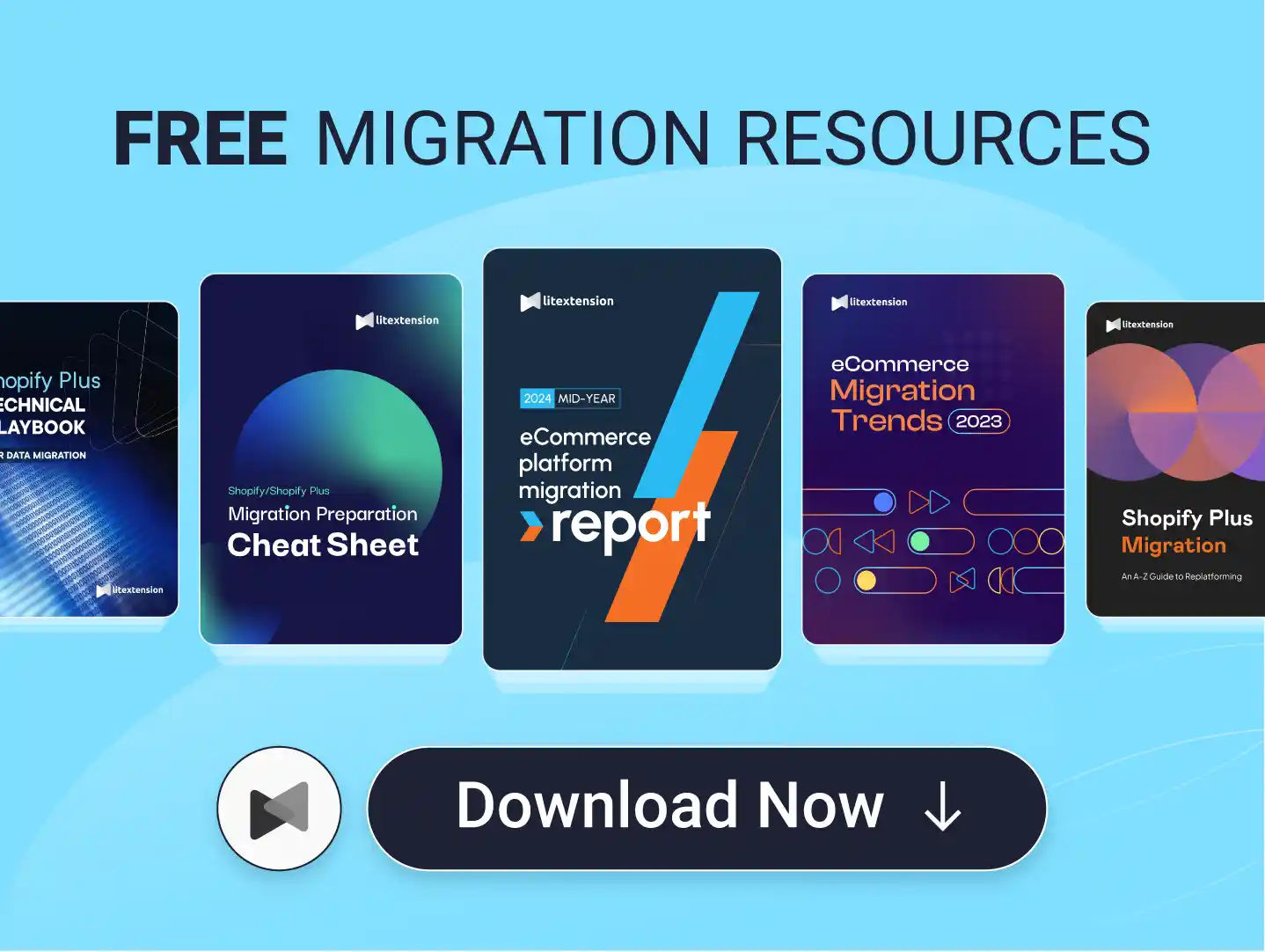Unlocking new opportunities, enhancing user experiences, and staying ahead in the ever-evolving digital landscape – these are the promises that come with a successful ecommerce migration. And, of course, the word “successful” requires a dedicated eCommerce migration checklist.
Worry less, because we've got your back. Join us as we delve into the key tasks that will empower you to navigate the complexities of eCommerce migration with confidence, including:
Let's embark on this transformative journey now!
What is eCommerce Migration?
eCommerce migration refers to the process of moving an existing online store from one platform or hosting environment to another. This may involve transitioning from an outdated legacy system to a more modern solution or switching platforms to gain access to new functionalities.
Without a strategic eCommerce migration checklist, businesses may encounter operational disruptions, loss of customer trust, and increased costs associated with fixing issues post-migration. In the long run, it will definitely hinder your growth opportunities and overall success.
Store Migration Made Easy With LitExtension!
LitExtension offers great migration solutions that help you transfer your data from the current eCommerce platform to a new one accurately, painlessly with utmost security.
MIGRATE WITH LITEXTENSION NOW!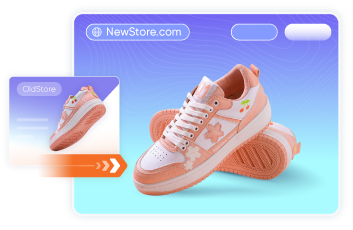
A Comprehensive eCommerce Migration Checklist For Your Business
Stage 1: Planning the Website Migration Project
The eCommerce migration checklist begins with the crucial phase of meticulous planning. This initial stage lays the foundation for a successful transition, ensuring that every aspect is carefully considered and strategized.
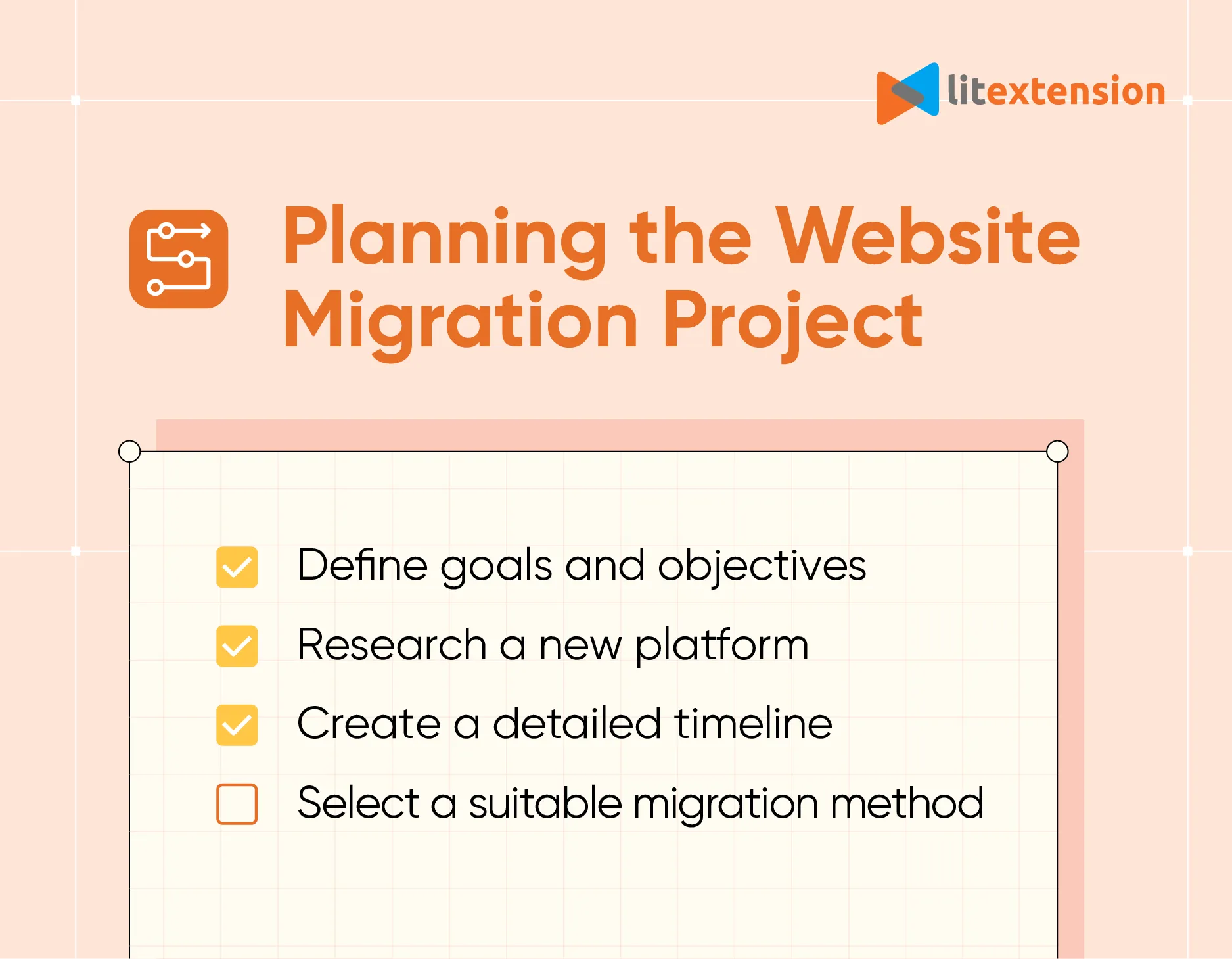
1. Define goals and objectives
For any website migration project plan, we always start with identifying the goals and objectives. By doing this, you and your team can know exactly the reasons for the migration and what needs to be done. Thus allowing e-merchants to track progress effectively.
Additionally, it's important to identify specific, measurable KPIs that the eCommerce data migration aims to improve, such as conversion rates, average order value, or shipping costs. Both qualitative and quantitative goals should be documented so the team can review after completion to determine if the objectives were achieved.
2. Research a new platform
Once you know your goals, it’s time to decide which eCommerce platform will be your store’s new home. The right choice will make your day-to-day work easier and give you room to grow in the future.
The first step is to identify the key features that must be evaluated for the new platform. Think about what your store can’t operate without; perhaps that’s B2B pricing, subscription products, or multi-currency support for selling internationally. When you have this list in hand, it’s much easier to compare options and rule out those that fall short.
We also suggest looking at the total cost of ownership. Beyond the monthly plan, factor in the price of apps, integrations, and payment processing fees. This gives you a realistic picture of what you’ll actually spend over time.
To make your decision easier, we’ve also put together a detailed guide on the best eCommerce platforms. We have included each platform’s key features, pricing, and who they’re best suited for:
Platform | Best for | Strengths | Limitations | Pricing |
Shopify | Most types of businesses | Easy to use, great app ecosystem | App costs can add up | $39 - 399/month |
WooCommerce | WordPress users | Highly customizable, no monthly fee | Requires technical setup | Free (plus hosting & add-ons) |
BigCommerce | Growing brands & B2B | Built-in features, scalable | Limited themes | $39 - 399/month |
Magento (Adobe Commerce) | Enterprise-level businesses | Full control, powerful for large stores | Complex setup, high dev costs | Custom pricing |
Wix | Small stores & beginners | Creative drag-and-drop builder | Limited flexibility for scaling | $0 - 159/month |
PrestaShop | Mid-sized, tech-savvy users | Open-source freedom or hosted simplicity | Technical setup required | From $32/month |
Squarespace | Creative product sellers | Beautiful templates, all-in-one | Limited advanced features | $16 - 65/month |
3. Create a detailed timeline
Next, developing a detailed timeline outlining each phase of the migration project is a must for your eCommerce migration checklist. A clear schedule helps your team stay focused, avoid last-minute stress, and reduce downtime.
It’s helpful to define key phases of the migration, like data preparation, testing, staging, and the final go-live. From there, you can map out who’s responsible for what and when. Assigning clear roles (owner, project manager, developer, QA) makes it easier to keep things on track.
When planning the go-live time, aim for a period when your store typically experiences lower customer activity. This helps minimize any disruption during the final switch, just in case something unexpected arises.
4. Select a suitable migration method
Once your timeline is in place, the next step is figuring out how you’ll actually carry out the migration. Currently, there are several migration approaches to consider. The right method depends on your store’s size, complexity, and the level of hands-on involvement you prefer during the process. Below, we’ve compared 3 common migration methods to help you decide which one fits best.
Criteria | DIY (Manual) | Automated Tool | Expert Service |
Cost | Low | Moderate | Higher |
Time required | Slow | Fast | Fastest |
Tech skill needed | Advanced | Low to moderate | None |
Custom field mapping | Limited (manual setup) | Supported (depends on the tool) | Fully supported and customizable |
Support level | Community forums, with no official support | Tool provider’s support team (chat, email, or help docs) | Dedicated support from the project manager |
Best for | Tech-savvy users with simple stores | Growing stores that want a faster, easier process | Large or complex stores that need expert help |
As you can see from the comparison above, the manual method may not be the most practical or reliable option for most online stores, especially when time, accuracy, and support matter. At LitExtension, we offer two streamlined migration solutions to help you move your store with confidence, and both include a free demo migration so you can see how it works before fully committing:
- Automated Migration Tool: You’ll use our tool to run the migration yourself, following a simple three-step process. With every migration under 100 customers, 100 orders, and 100 products (a total of fewer than 300 entities), you can use this tool for FREE.
- All-in-One Migration Service: Our expert team handles the entire migration for you, from start to finish. A dedicated Personal Assistant (PA) will oversee the project, keep everything on track, and ensure your data is transferred safely, with no effort on your end.
After 12+ years of experience, LitExtension is proud to be the #1 eCommerce Migration Expert. We guarantee the utmost level of data accuracy and security. Learn how we’ve successfully delivered standout migration projects for a wide range of brands here.
Stage 2: Replatforming eCommerce Website
Moving forward in the eCommerce migration checklist, the second stage focuses on the intricate process of eCommerce replatforming – an essential step for upgrading and optimizing your website.
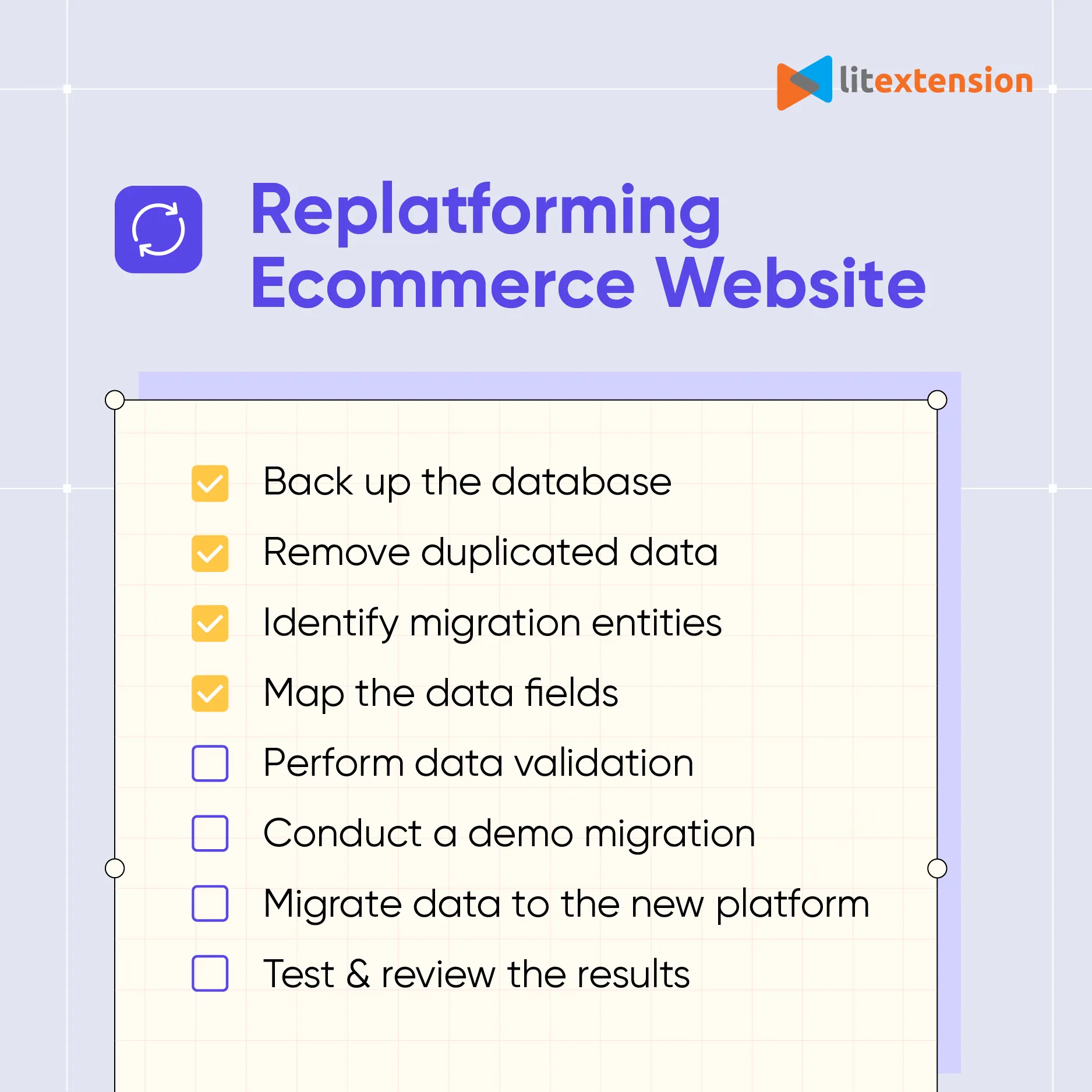
1. Back up the database
Before starting the migration, it’s important to take a backup of your current store. It gives you a safety net in case anything goes wrong and helps you capture a clean snapshot of your store before anything changes.
Here’s what to audit and back up before migrating:
- Export your full database, including products, product categories, customers, orders, CMS pages, and blog posts.
- Crawl your entire site using a tool like Screaming Frog and save the full URL list as a CSV file. This will help with SEO tracking and redirect setup after the migration.
- Take screenshots of your top landing pages, product layouts, and any key design sections. These will help recreate or compare layouts on the new platform.
- Store at least two backups of your exported data, one in the cloud and one locally. Use a clear file naming format (e.g., 2025-08-13_pre-mig) so you can easily locate them if needed.
2. Remove duplicated data
Once backups are safeguarded, it's time to clean up redundant information, clogging up storage space. This decluttering step will streamline the transfer of only relevant data.
Having worked in this industry for a few years, we are aware that duplicate product listings and inactive customer accounts consume unnecessary bandwidth. For this reason, you will need to remove any obsolete or junk records from the database.
3. Identify migration entities
With your store data backed up and cleaned, the next step is defining the scope of what you’ll migrate. These are your migration entities – the core components that will be transferred to the new store.
To help you plan, here’s a general overview of what store data can typically be manually transferred, and what will likely need to be rebuilt or reconfigured on the new platform:
Data type | Can be migrated | Re-created on the new site |
Products/collections | Yes | — |
Customers/orders | Yes | — |
Blog posts/pages | Yes | — |
Theme/design | — | Use a new theme or work with a development team |
3rd-party apps | — | Reinstall or replace manually |
Tax, shipping rules | — | Reconfigure in the new platform settings |
In addition to the basics, some stores also have custom fields, product labels, tags, reward points, or other advanced data. These can still be migrated, but they often require extra attention. If you're unsure how to handle these elements, our team at LitExtension can help manage the more complex parts and ensure everything moves over correctly.
4. Map the data fields
Since each eCommerce platform has its own way of storing and organizing data, you’ll need to map your existing fields to the new structure. For instance, what’s called “title” in one platform might be “product_name” in another. Without proper field mapping, important data can end up missing, mismatched, or displayed incorrectly.
You don’t need to map every single field manually at this stage, but it’s important to have a clear idea of where key data points will be placed. For example:
- Product names, SKUs, prices, and inventory quantities should each be mapped to their exact counterparts on the new platform.
- Customer contact details, order statuses, and timestamps also need to line up properly to keep historical records intact.
- If you have custom fields (e.g., brand, material, delivery notes), consider how and where these will be stored, whether as tags, metafields, or custom attributes.
Doing this early gives you more control during the migration process and reduces the chance of missing or broken data later on. If you're using a tool or working with a migration service, having a clear field map also makes communication much easier.
5. Perform data validation
Following the data mapping process, our next task for the eCommerce migration checklist is to validate the sample records and alignments between systems. By evaluating representative sets of migrated data, we can double-check that all corresponding fields are transferring across accurately as intended.
6. Conduct a demo migration
Once validation is complete, it’s best to undertake a trial migration beforehand. While there is no replacing real data, this test run will simulate the actual migration workflow on sample datasets.
It offers you an opportunity to identify potential bugs or unexpected conflicts before transitioning to live customer-facing areas. Any final tweaks required can be made based on learnings from this test phase.
7. Migrate data to the new platform
We are ready to perform the actual migration to your new eCommerce platform! Depending on the chosen website migration strategy, the time it takes to transfer a complete database will vary.
If you're using an automated tool or script, begin by launching the process and importing your data into a clean version of your new store. During the migration, keep a close eye on system logs or progress dashboards to monitor the migration's progress. A successful migration will set the foundation for the final review and launch steps that follow in this eCommerce migration checklist.
-
Running full migration with LitExtension's Automated Migration Tool
This is also a good time to generate a draft 301 redirect map, pairing URLs from your old store with their new equivalents. This map will help preserve your SEO rankings once the new site goes live.
If you’re working with LitExtension, you won’t have to handle this manually. We offer an additional option called Create 301 Redirects on Target Store, which takes care of it for you. However, due to the platforms’ structure, this option does not apply to stores moving to PrestaShop and OpenCart.
8. Test & review the results
Now that the migration is complete, this is a good time to review the results. At this stage, it’s not about how the store looks or functions yet. The focus is simply on whether the data has been transferred correctly.
Here are a few things we usually check during this phase:
- Cross-reference product records to ensure SKUs, titles, descriptions, and inventory were preserved.
- Verify customer and order data to ensure records are complete and correctly linked.
- Check the structure of collections, categories, and product assignments.
- Review CMS content and blog posts for consistency in formatting and completeness.
- Scan the migration logs or reports for any entries that were skipped or failed. These should be reprocessed or corrected.
- If a 301 redirect map was created, begin reviewing URL matches and gaps against the pre-migration crawl.
This check doesn’t need to be exhaustive, but it’s worth catching any obvious issues early, before moving on to store setup.
Stage 3: Setting Up the New Home
Now that the extensive migration work of Stage 2 is complete, we can move forward to Stage 3 of setting up your new home to welcome the customers.

1. Design the storefront
The first step in this stage is designing the storefront—the part your customers will actually see and interact with. This includes everything from the homepage layout to product pages, navigation menus, banners, and overall styling.
Most eCommerce platforms offer a range of free and paid themes. Choose one that fits your brand and product type, but also consider usability and make sure it’s mobile-friendly, loads fast, and supports features you need (like filters, cross-selling sections, or reviews).
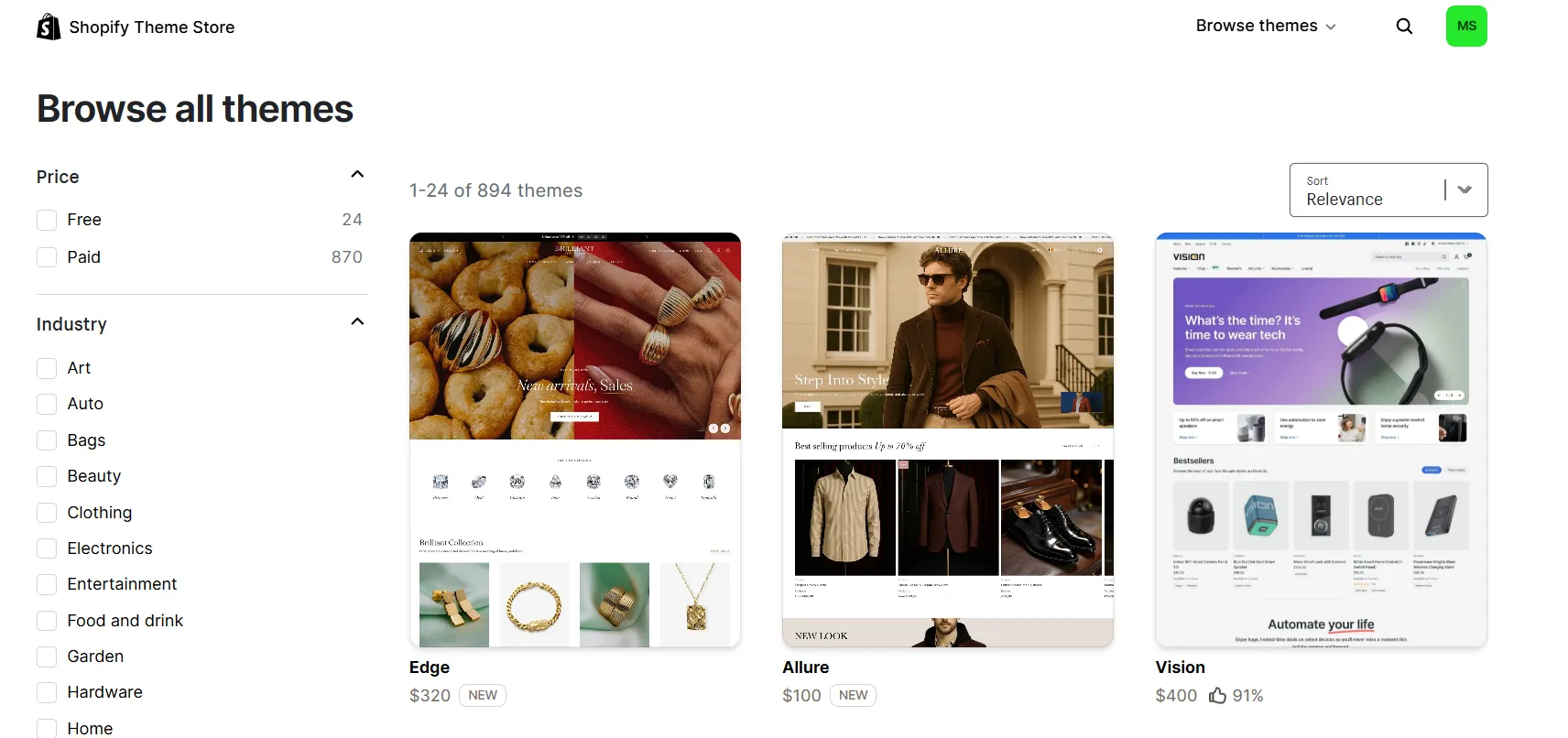
Once a theme is selected, you’ll need to:
- Adjust fonts, colors, logos, and images
- Set up your main navigation and footer links
- Customize key sections like hero banners, featured collections, or promotional blocks
- Build out core pages: homepage, product list, product detail, cart, and checkout.
If you're migrating to Shopify and need something beyond what themes offer, our Shopify development experts at LitOS can help. We provide store customization services, from small layout tweaks to fully tailored sections that match your brand.
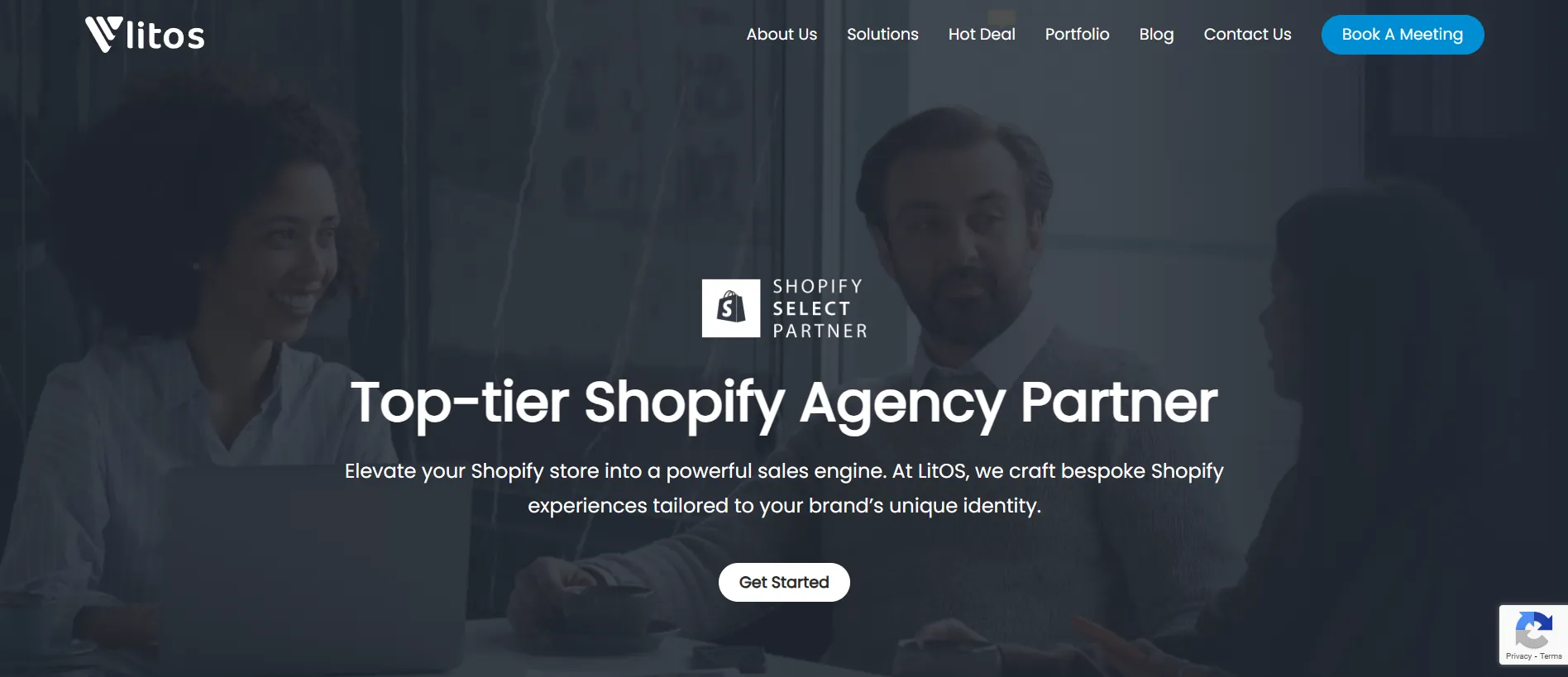
2. Install extensions
The lack of functionality is one of the most popular reasons for merchants to seek eCommerce platform migrations. So, installing relevant extensions is your opportunity to overcome this problem. You can pick out the best apps from the platform’s official store or third-party marketplaces.
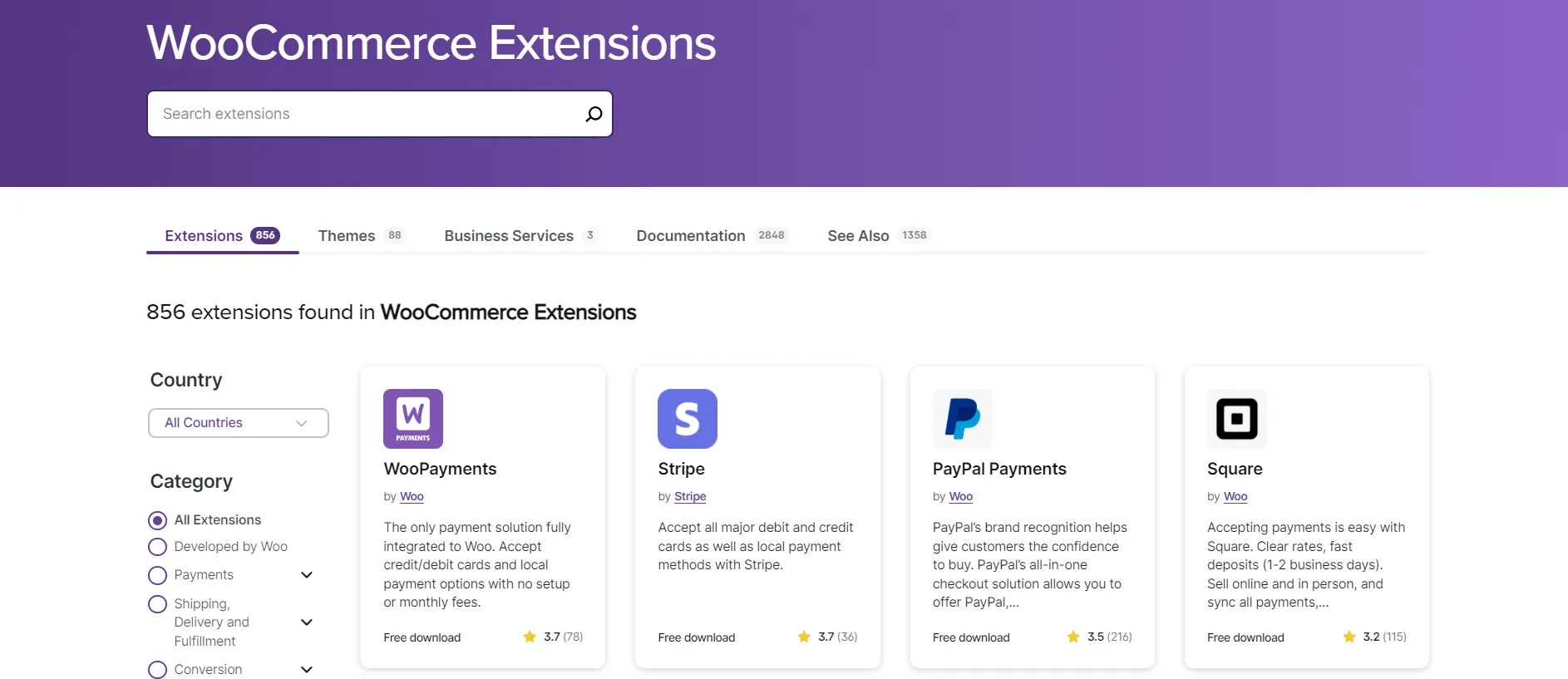
Whether it's for analytics, marketing, or additional payment gateways, carefully select and integrate extensions that align with your business goals. Thoroughly test each extension to ensure compatibility and functionality, minimizing the risk of technical issues that could impact the customer experience.
3. Add delivery options
Diversify your delivery options to cater to a broader range of customer preferences. A well-structured and efficient delivery system contributes significantly to customer satisfaction and loyalty.
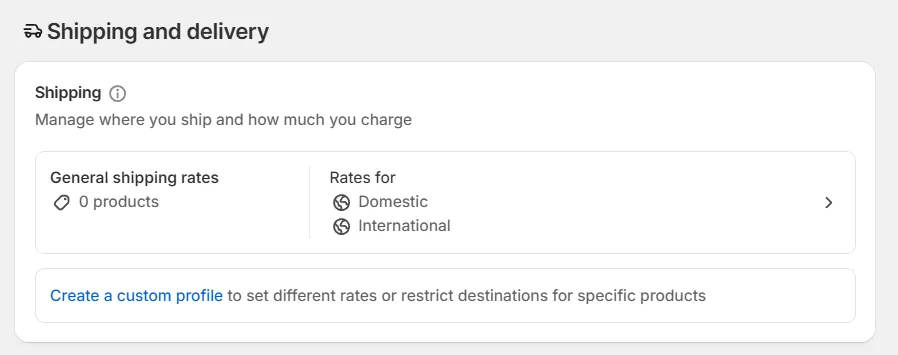
Update shipping methods, rates, and estimated delivery times based on your new logistics setup. Then, clearly communicate these changes to your customers, providing transparency and managing their expectations.
4. Change payment settings
Aligning with the delivery options, we also have to review and update the payment settings to accommodate any changes in the new platform. Ensure that your eCommerce platform supports the selected payment options, and update any relevant information, such as account details or configurations.
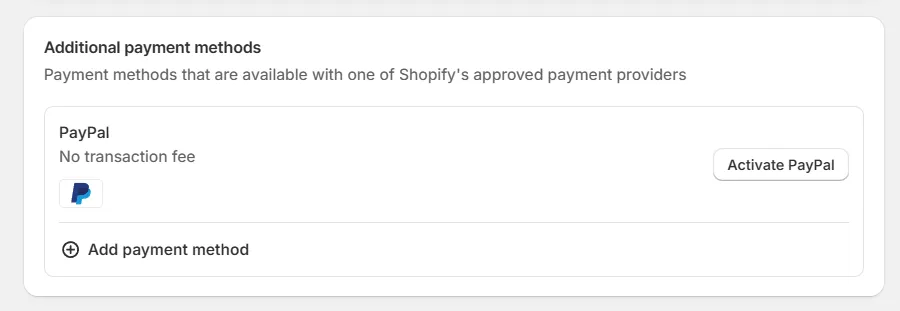
7. Integrate multiple sales channels
To continue the eCommerce migration checklist, expand your store’s reach by integrating multiple sales channels. Whether it's through social media platforms, marketplaces, or other online channels, diversifying your sales avenues can boost visibility and attract a broader audience. Sync product listings, inventory, and order processing to streamline operations and maintain consistency across all channels.
You can consider LitCommerce – a cutting-edge, all-in-one multi-channel selling tool for this task. It offers a user-friendly interface, allowing you to manage and synchronize your product listings, inventory, and orders across multiple channels from a single dashboard.
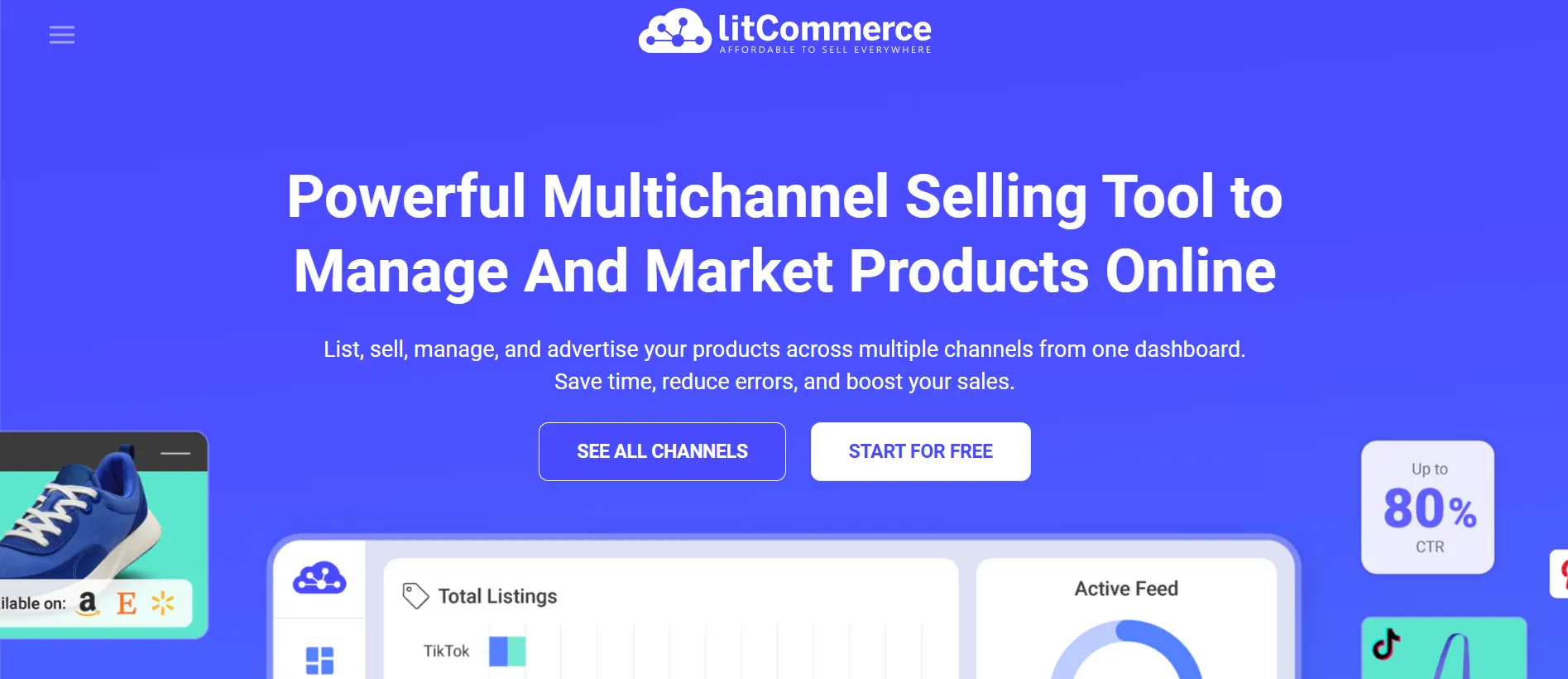
6. Place test orders
Before officially relaunching your eCommerce store, conduct thorough testing by placing test orders. This ensures that the entire purchasing process, from product selection to payment and order confirmation, is functioning seamlessly.
Identify and rectify any issues that may arise during the testing phase to guarantee a smooth experience for your customers once the site is live.
7. Modify DNS & domain settings
Next, we will switch your store to the new website address so customers can start using it.
Before doing that, make sure your old store is paused or put into maintenance mode. This helps prevent new orders or changes while you prepare to go live. Then, transfer any new data that may have been added since your last migration. These are usually things like new orders, customers, or updated products.
After that, connect your domain to the new store. This means adjusting your domain settings so that when someone visits your website, they’ll be taken to your new store instead of the old one. You can do this through your domain provider (like GoDaddy, Namecheap, etc.), most platforms will give you instructions specific to your setup.
Lastly, if you created a list of old and new URLs (a redirect map), upload it now so customers and search engines are directed to the right pages. This helps protect your SEO and avoids broken links.
8. Monitor performance post-launch
After your store goes live, take a moment to make sure everything is running smoothly. The first few days are crucial for spotting issues early. You should try browsing the site as a customer would, test the checkout process, and check that pages display correctly.
It’s also helpful to monitor your traffic using tools like Google Analytics and Search Console. If anything seems off, such as broken links or sudden drops, you can catch and fix it quickly. A small banner inviting users to report issues can also go a long way in improving their experience.
If you're launching a Shopify store, we’ve also created a Shopify Launch Checklist to help you go through key setup tasks with confidence. And it’s available to download for FREE!
Stage 4: Promoting Your Online Store
Now that your online store has a refreshed design, it's time to turn your attention to promoting it effectively. Here's a comprehensive eCommerce migration checklist to ensure your promotional efforts are a resounding success.
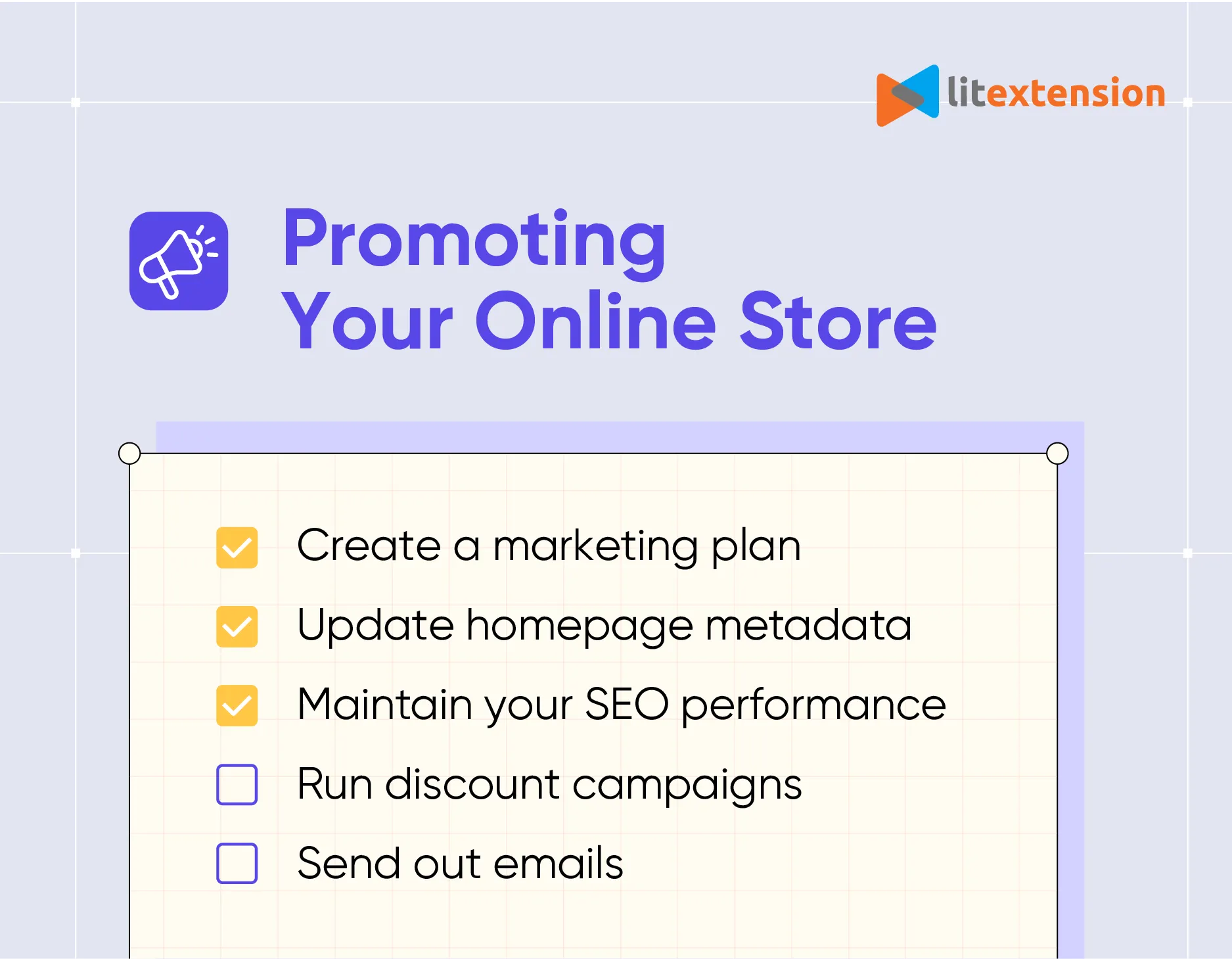
1. Create a marketing plan
Crafting a well-thought-out marketing plan is the cornerstone of successful online promotion. Start with identifying your target audience, outlining key promotional strategies, and setting measurable goals. You can also leverage a mix of digital marketing channels, such as social media, content marketing, and paid advertising, to reach a broader audience.
2. Update homepage metadata
Optimizing your homepage metadata helps to enhance search engine visibility. Update meta titles, descriptions, and keywords to reflect your latest offerings, ensuring alignment with your marketing plan. This step is crucial for attracting organic traffic and improving your website's ranking on search engine results pages (SERPs).
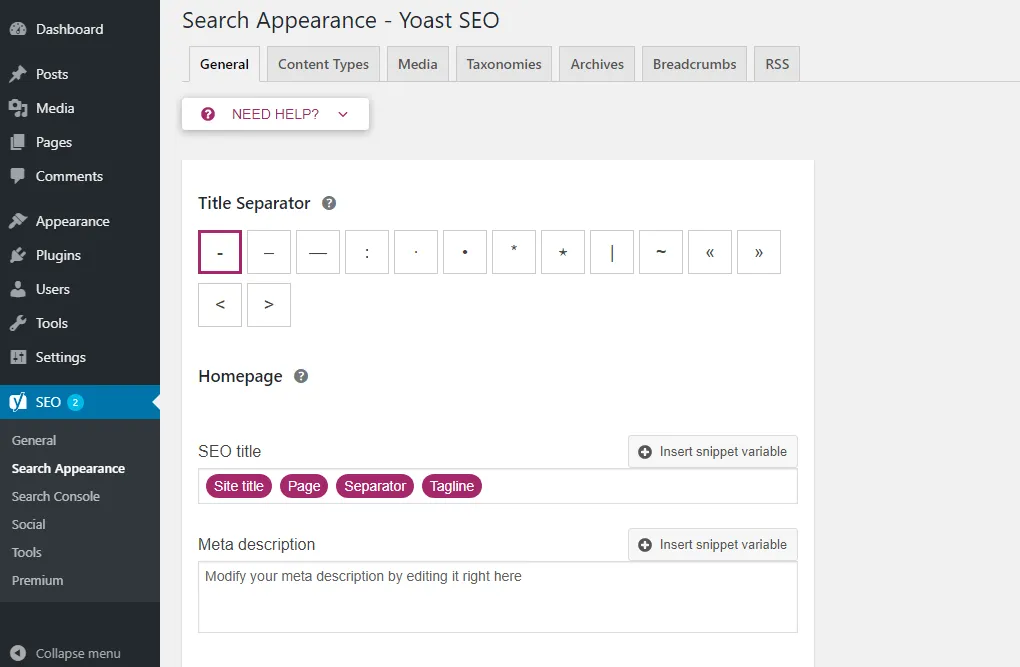
3. Maintain your SEO performance
Preserving your SEO performance is key after migration. Start by running a quick SEO audit to catch any issues caused by the transition, like broken links, missing metadata, or outdated internal links. From there, you can update internal URLs and monitor keyword visibility to keep your rankings stable.
At LitExtension, we offer an additional migration service called SEO URLs Migration to help you with this. It keeps your store’s URLs exactly the same during the move, so you won’t have to worry about broken links or disrupting the browsing experience.
4. Run discount campaigns
Everyone loves a great deal! And to celebrate your moving to a new home, creating time-sensitive promotions, bundle deals, or loyalty programs would be a strategic way to drive sales and generate buzz. Also, make the best out of those deals by promoting them on social media, and email marketing to further your campaign’s reach.

Check out these sales promotion ideas for your inspiration!
5. Send out emails
Email marketing is a vital part of any eCommerce migration checklist. Harness the power of email, and your brand will be able to gain a higher engagement rate than ever!
Craft compelling newsletters, product announcements, and exclusive offers to keep your customers informed and interested. Personalize your emails based on customer preferences and behaviors to enhance the overall customer experience.
eCommerce Migration Checklist: FAQs
How do I migrate my eCommerce website?
Migrating your eCommerce website involves several key steps:
- Select a new eCommerce platform that aligns with your business needs.
- Plan and execute the transfer of crucial data.
- Design and customize the new platform to match your brand identity and improve user experience.
- Rigorously test the website before launching to identify and address any issues.
If you don’t know where to start, our eCommerce website migration checklist can help you out!
What is an example of platform migration?
With 10+ years of working with more than 150,000 clients, LitExtension has successfully delivered 200,000+ migration pairs. You can refer to this eCommerce migration case study for more insights.
How can I migrate my website without losing SEO?
To migrate your website without losing SEO, implement 301 redirects for pages with URL changes, update metadata to reflect the new content structure, and ensure that the new platform adheres to SEO best practices.
If these are too complicated for you, utilize LitExtension’s SEO URLs Migration & 301 Redirects service. We are guaranteed to preserve your website’s SEO rankings despite platform transitioning.
What are the key considerations when creating an eCommerce migration plan?
When creating an website migration plan, key considerations include:
- Defining clear objectives and goals
- Conducting a comprehensive audit
- Creating a detailed timeline with milestones
- Selecting a suitable platform
How long does a typical migration take?
It depends on the size of the store, the complexity of the data, and the platforms involved. A basic migration can be completed in a few hours, while more complex ones may take several days to complete. Factors such as custom fields, third-party integrations, and manual adjustments can also impact the timeline.
Conclusion
As we draw the curtains on the eCommerce migration checklist, it's evident that success lies in meticulous planning, strategic execution, and a keen understanding of the unique challenges posed by website replatforming.
For a simpler process, the LitExtension experts are here with a helping hand. Contact us for more information on migrating services!
Last but not least, you can take advantage of the LitExtension blog or our Facebook community group for more eCommerce insights, too.

